Key takeaways:
- Sustainable living benefits both the environment and personal finances by promoting mindful resource management and waste reduction.
- Adopting energy-efficient habits, like switching to LED bulbs and unplugging devices, can lead to significant cost savings on utility bills.
- Buying second-hand items and supporting local businesses contributes to sustainability while saving money and fostering community well-being.
- Creating a shopping list helps prevent impulse purchases, ensuring spending aligns with sustainable practices.
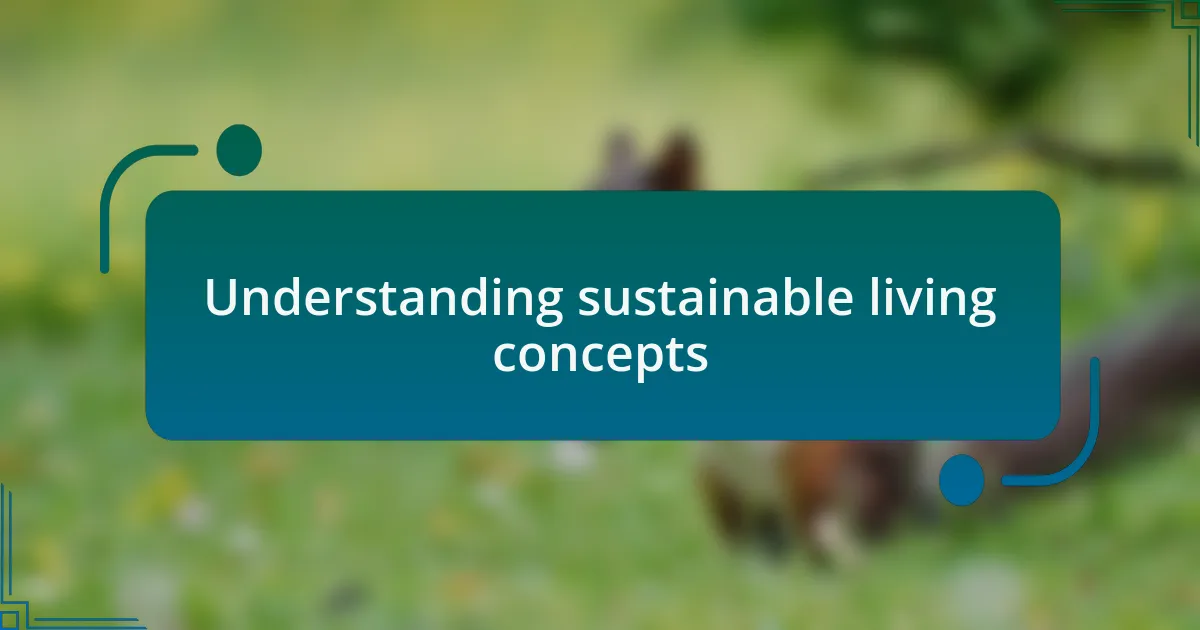
Understanding sustainable living concepts
Sustainable living is about making choices that benefit both our planet and our wallet. When I first embraced this lifestyle, I was surprised to realize that many eco-friendly practices, like composting and reducing energy consumption, actually led to significant savings. Have you ever considered how being mindful of your resources not only helps the environment, but also cuts down your monthly bills?
One of the core concepts of sustainable living is the idea of reducing waste. I remember the day I decided to stop buying bottled water; it was a simple action, yet it felt empowering. In doing so, I realized not only was I minimizing plastic waste, but I was also saving money that could be better spent on experiences or healthier food options.
Additionally, sustainable living encourages the use of renewable resources. When I installed solar panels on my roof, I wasn’t just making an environmental statement; I was also investing in a long-term financial benefit. Have you thought about how renewable energy could transform your energy expenses? Embracing these concepts requires a shift in mindset, but once you see the financial and ecological advantages, it becomes an exhilarating journey.
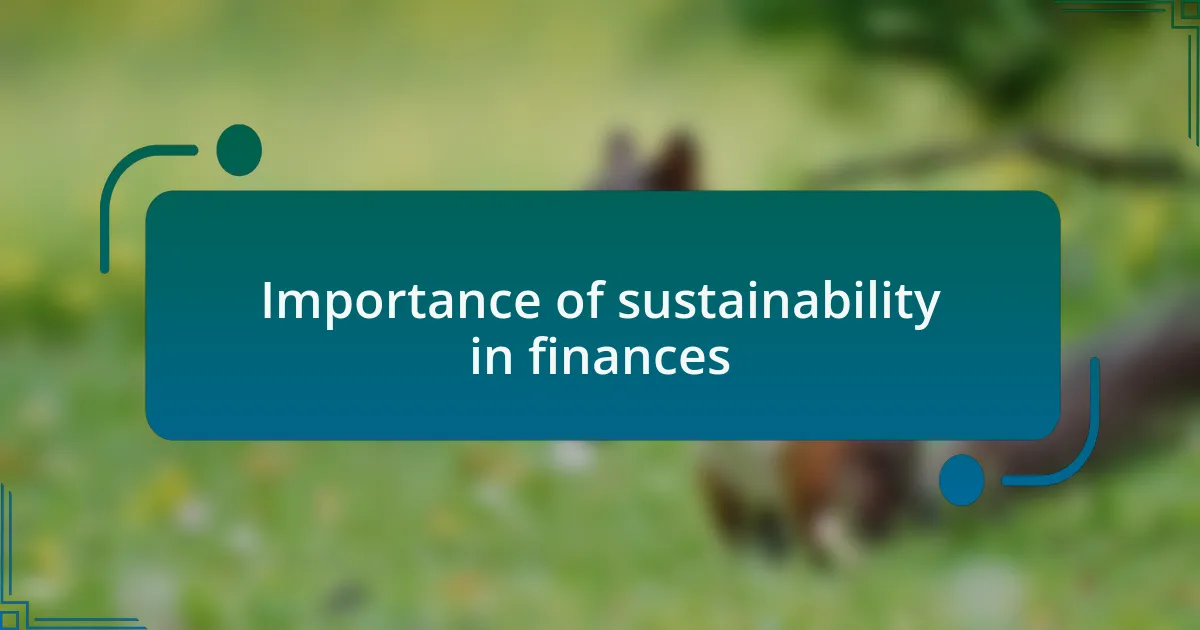
Importance of sustainability in finances
Sustainability in finances is crucial because it promotes conscious spending habits that lead to not just environmental, but also financial health. I’ve learned that making decisions with sustainability in mind, like choosing quality over quantity, directly reduces the need to replace items often. How many times have I felt regret after buying something cheap that fell apart quickly? By investing in durable products, I found my long-term savings increased significantly.
Moreover, sustainable practices can inspire innovative financial strategies. For instance, I started growing my own vegetables in my backyard, which not only provided fresh produce but also eliminated grocery costs. It brought me immense joy to watch those plants thrive, serving as a reminder that by nurturing the earth, I’m also nurturing my financial wellbeing. Have you ever thought about how your home can contribute to your budget?
Lastly, the ripple effect of sustainable living can manifest as reduced environmental costs that impact us all. Each penny saved on utilities or waste disposal due to eco-conscious choices contributes to a collective financial benefit. I remember feeling a wave of satisfaction when I saw my energy bill decrease after implementing small changes, like switching to LED bulbs. Isn’t it rewarding to know that both my wallet and the planet benefit from my efforts?
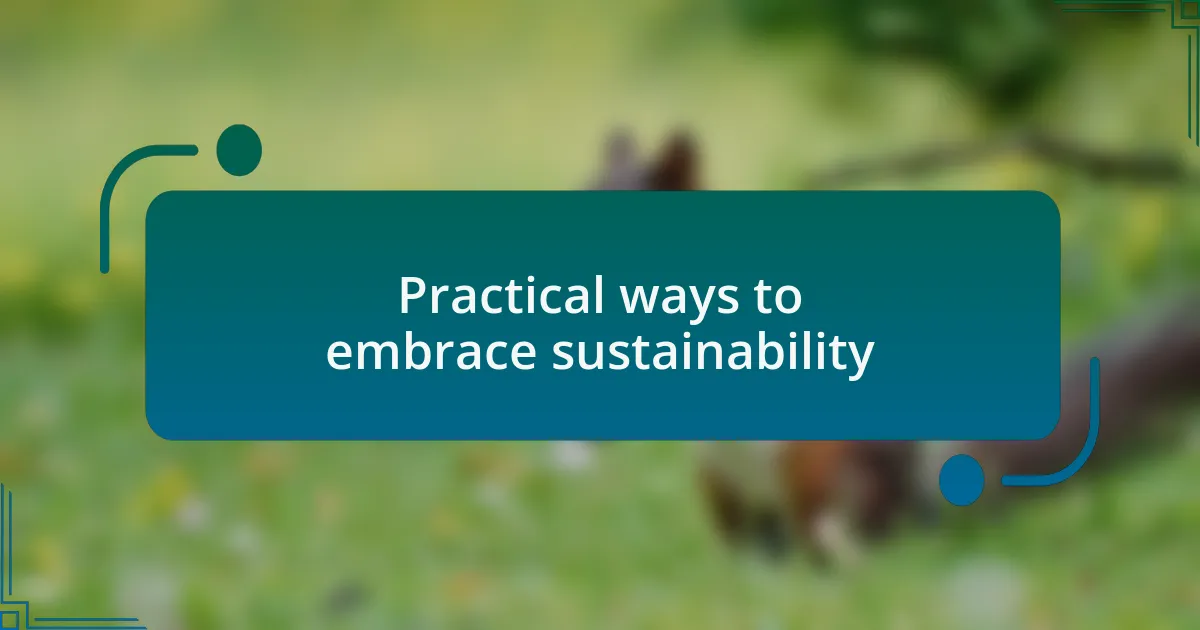
Practical ways to embrace sustainability
One of the simplest practical ways to embrace sustainability is by rethinking my daily choices. For example, I switched to reusable shopping bags, which not only cut down on plastic waste but also saved me money on those pesky bag fees at stores. Every time I remember to bring my bags, I can’t help but feel a little bounce in my step – it’s a small victory that makes a difference.
In my quest for sustainable living, I also discovered the joy of DIY cleaning products. With just a few simple ingredients like vinegar and baking soda, I created safe and effective cleaners that saved me considerable sums compared to commercial brands. Have you ever pondered how much we spend on branded products? The satisfaction of knowing I’m using something safe for my family and the planet brings a sense of peace that’s worth every dime I saved.
Additionally, I found that engaging with local thrift shops added an exciting twist to my shopping habits. Not only do I reduce waste by giving clothing a second life, but hunting for hidden gems has become a delightful treasure hunt. It’s a rush to walk away with unique finds at a fraction of the price, and honestly, have you ever felt the thrill of scoring that perfect vintage piece? Embracing this kind of sustainable shopping has transformed how I view consumption, turning necessity into enjoyment while being kind to our planet.
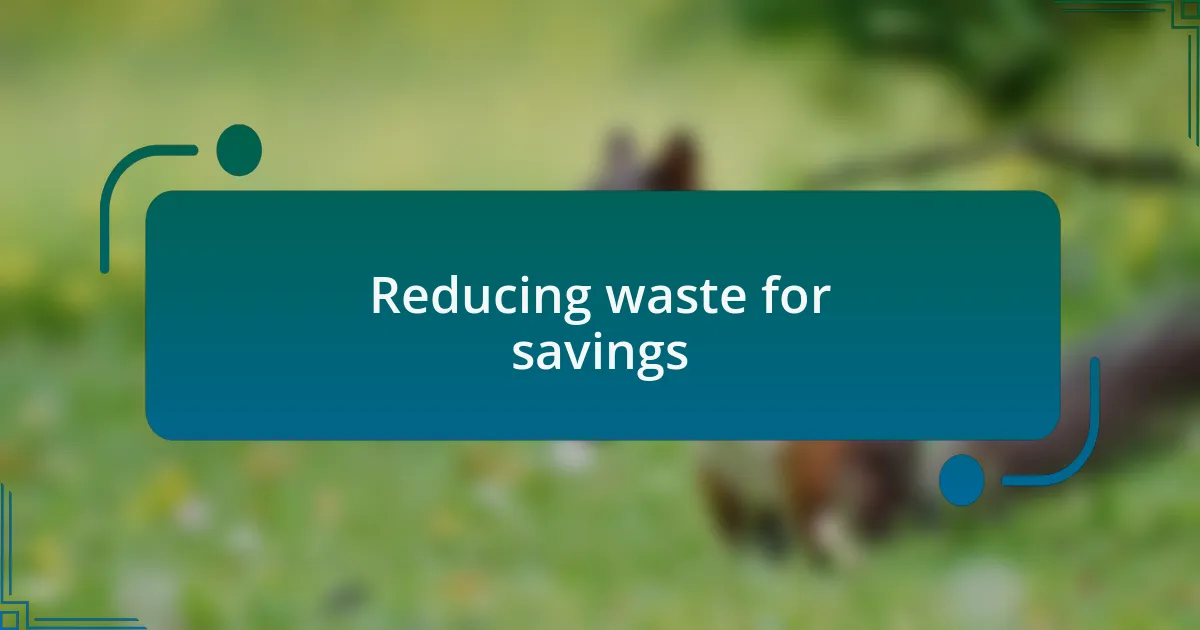
Reducing waste for savings
Reducing waste has been a game-changer for my wallet. For instance, I started composting my kitchen scraps instead of tossing them in the trash. Not only did this cut down on landfill waste, but it also eliminated the need for expensive garbage bags. Have you thought about how much you spend on trash disposal? The savings really add up over time.
Another impactful decision was to minimize single-use products. Transitioning to items like beeswax wraps instead of cling film may seem minor, but it’s made a real difference in both waste and expenses. Each time I wrap leftovers, I feel a sense of accomplishment knowing I’m not just saving money; I’m also reducing my environmental footprint. Have you tried replacing one disposable item in your kitchen? You might find it liberating and cost-effective.
While I was decluttering my home, I realized the immense potential in repurposing. I transformed old glass jars into storage solutions instead of buying new containers. The thrill of creating something functional from what would have been waste not only saved me money but also brought a sense of creativity into my everyday life. Have you ever thought about how an old item might become something new? It’s a wonderful surprise to discover the possibilities hidden in your clutter.
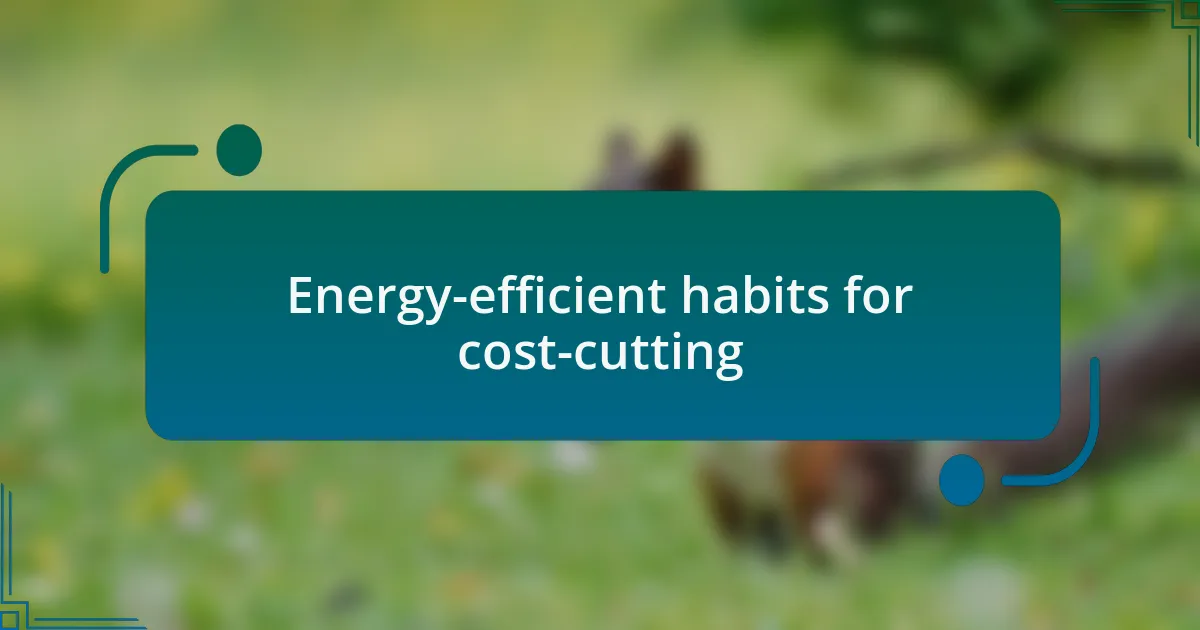
Energy-efficient habits for cost-cutting
Adopting energy-efficient habits has transformed my monthly utility bills. For example, when I switched to LED bulbs, I noticed a significant decrease in my electricity usage. Have you ever calculated just how much those old incandescent bulbs were costing you? The upfront investment was minor, but the long-term savings have been nothing short of enlightening, both metaphorically and literally.
Another change I made was being mindful about unplugging devices when they’re not in use. I used to leave chargers and electronics plugged in, thinking it wouldn’t make a difference. It’s fascinating how small habits, like unplugging that coffee maker or laptop, can add up to noticeable savings over time. Have you considered how many devices in your home might be silently sucking up energy? Trust me, it feels rewarding to actively reduce my energy consumption and watch those savings grow.
Lastly, I started adjusting my thermostat seasonally to ensure my home isn’t wasting energy on heating or cooling when it’s not needed. In the cooler months, I wear warmer clothing instead of cranking up the heat, and in summer, I embrace the natural breeze whenever possible. Have you ever tried bundling up with a cozy blanket instead of reaching for the thermostat? It’s not just about comfort; it’s also about embracing a lifestyle that’s as gentle on my wallet as it is on the planet.
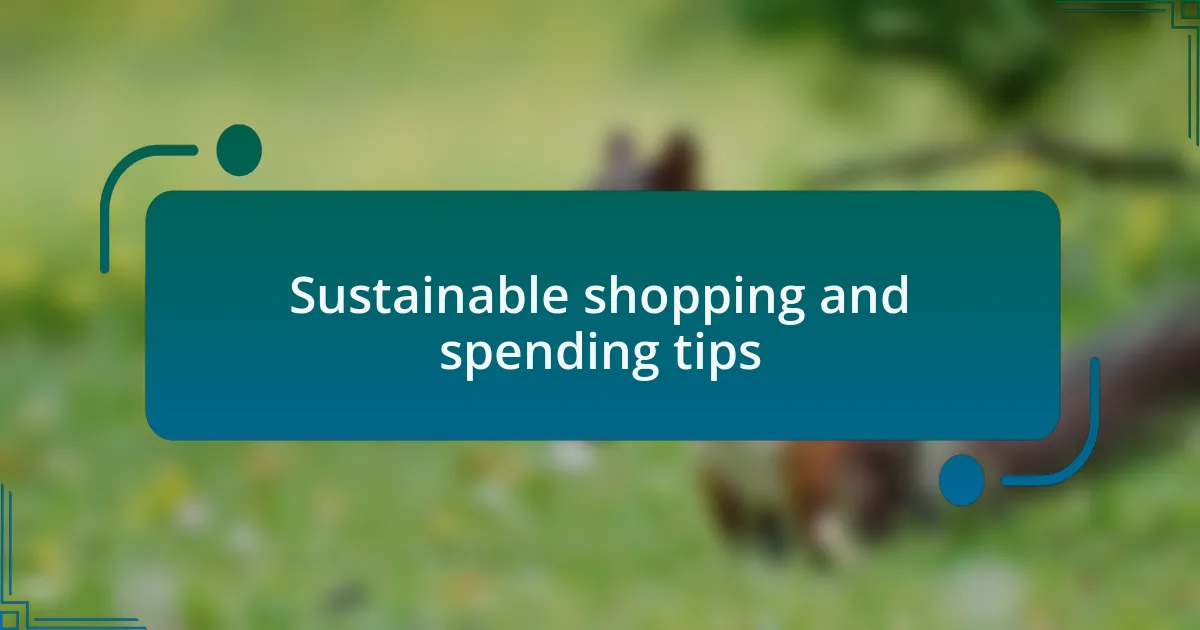
Sustainable shopping and spending tips
When it comes to sustainable shopping, I’ve found that buying second-hand items has been a game-changer for both my wallet and the environment. Just the other week, I discovered a local thrift store where I scored a beautiful vintage jacket. It cost me a fraction of the price I’d pay for something new, and wearing it feels like I’m adding a story to my wardrobe rather than just another piece of fabric. Have you ever considered the unique treasures hidden in your local thrift store?
Another approach I’ve embraced is creating a shopping list before heading out. This simple practice has dramatically cut down on impulse purchases that don’t align with my sustainable goals. I once went to the grocery store without a list and left with several items I didn’t need, a decision that often ended up with half of them going to waste. By planning ahead, I not only save money but also ensure I’m buying only what contributes to a sustainable lifestyle. Have you tried this strategy? It might just transform your shopping experience.
I also prioritize supporting local businesses whenever I can. Buying from farmers’ markets or nearby artisan shops not only supports the community but often yields fresher, healthier options. I remember the first time I bought produce directly from a local farmer; the taste was incomparable. Plus, knowing that my money stays within my community gives me a sense of fulfillment. Have you explored the benefits of shopping local? It’s amazing how much joy it can bring while being kind to our planet too.